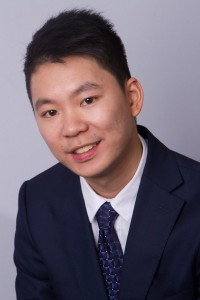Memo #364
By: Justin Kwan – justin.kwan [at] alumni.ubc.ca

The “Fishball Revolution,” triggered when police cracked down on unlicensed street hawkers in Mong Kok during the Lunar Year, attracted international media attention to Hong Kong. The demonstrations were the largest since the 2014 Umbrella Movement, but more importantly, reflected potentially significant shifts in Hong Kong protest culture.
First, a more radical set of localists groups has gained prominence. In the past, most pro-democracy groups had sought autonomy from China, with student activist groups such as Scholarism advocating the strengthening of Hong Kong’s autonomy within the existing “One Country Two Systems” (OCTS) framework. However, more radical groups such as Hong Kong Indigenous (HKI), one of the main participants of the Mong Kok protests, have gained support. The HKI manifesto disavows the OCTS framework and the Hong Kong pan-democrats who attempt to work within it. The HKI also maintains close association with pro-independence groups such as Civic Passion.
Second, the line between protests and riots has become blurred due to increased violence. Unlike the 2014 Occupy Movement, in which students emphasized peace and non-violent civil disobedience as core principles of the movement, the “Fishball Revolution” saw violence that resulted in 130 people injured, and around 60 people arrested. The inability of the largely peaceful Umbrella Movement to secure universal suffrage encouraged radicalist groups to seek greater use of violence. This has raised concerns from other Hong Kong activists and intellectuals who see such tactics as unacceptable and not reflecting the values of the majority.
If the Mong Kok demonstrations are a predictor of events-to-come, they suggest that as the political polarization between the government and protesters is intensified, the collateral damage will likely be that everyday life will become hijacked by political battles, with many ordinary citizens caught in the middle.
Despite the increase in the divergence of positions between the government and the protesters, groups such as Youngspiration provide a middle ground for discussion, emphasizing both the importance in supporting activists as well as safeguarding Hong Kong through Legislative Council (LegCo) participation. The group also emphasizes that the actions on the streets of Hong Kong and within the LegCo should be mutually reinforcing. If Youngspiration can help provide a balanced framework that is deemed reasonable to both sides, it may provide a peaceful resolution that might serve to benefit as many in Hong Kong as possible.
About the Author:
Justin Kwan is a Master’s student in Asia Pacific Policy Studies Program at the University of British Columbia. His research examines national identity in Hong Kong and Taiwan. Follow him on Twitter at @thejustinkwan.

Business is as usual on the streets of Mong Kok one week after the “Fishball Revolution” (Source: Justin Kwan, 2016).

A cartoon depiction of the “Fishball Revolution” by a local writer suggesting that although the chaos in Mong Kok may have been sparked by hawkers illegally selling fishballs, the event is connected to larger societal problems (Source: Facebook Page by Redwhiteblueboy 紅白藍孩).
Links
- Grace Tsoi and Tessa Wong, “What are Hong Kong Localists Angry About?” BBC, February 11, 2016.
- Jennifer Ngo, “Explained: who are Hong Kong Indigenous and what was their role in the Mong Kok protest and riot?” South China Morning Post, February 9, 2016.
- Jason Y. Ng, “Umbrellas in Bloom: Hong Kong’s occupy movement uncovered.” (Hong Kong: Blacksmith Books), 2016 (forthcoming).
- John Nguyet Erni, “A Legal Realist View on Citizen Actions in Hong Kong’s Umbrella Movement” Chinese Journal of Communication, 8, no. 4 (2015): 412-419.
- Yun-chung Chen & Mirana M. Szeto, “The forgotten road of progressive localism: New Preservation Movement in Hong Kong,” Inter-Asia Cultural Studies, 16, no. 3 (2015): 436-453.
- Alvin Y. So, “The Making of Hong Kong Nationalism,” in Jeff Kingston, ed., Asian Nationalisms Reconsidered (London: Routledge, 2015), 135-146.
- Chi Kit Chan, “China as ‘Other’: Resistance to and Ambivalence Toward National Identity in Hong Kong,” China Perspectives, 1, (2014): 25-34.
Related Memos:
See our other memos on Hong Kong.